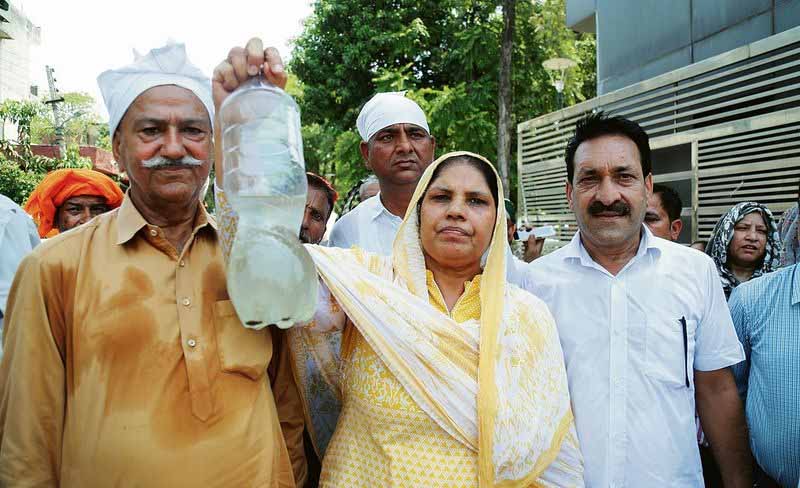Jalandhar: 160 million litres of water is consumed by residents in Jalandhar city (within MC limits) every day for various purposes. All this is being drawn from the city’s fast-depleting groundwater reserves. The Central Ground Water Board of India has declared Jalandhar a dark zone, where millions of litres of water are being drawn from the city’s groundwater reserves. Despite a huge supply of groundwater, with the advent of the rainy season comes reports of diseases, contamination, pollution and sewer-mixing in the city’s water supply by residents. Over the past three years, Jalandhar MC has witnessed a steady rise in the number of failed water samples, almost tripling. While over 20 samples failed the test in 2022, over 40 samples tested by the municipal corporation failed last year. This year, highly placed officials said over 50 samples within the MC limits have already failed the test. 600 (legal) tubewells installed by the Municipal Corporation in the municipal limits of Jalandhar supply clean drinking water to lakhs of households. Jalandhar has 1 lakh 55,000 (legal) tap water connections within the municipal limits. These do not include illegal water connections and a network of submersible pumps.
The supply of clean drinking water within the city limits is an issue that is deeply intertwined with old, rusted sewerage pipelines in the old city areas. The municipal limits of Jalandhar are dotted with old city areas, congested areas, bazaars and narrow lanes, where even taking a sewerage suction machine during monsoon is impossible. However, the drinking water crisis mainly during the monsoon is a problem that is increasing with each passing year. The densely populated settlements of the city are among the areas where there are reports of spread of diseases due to contaminated water supply almost every year. Most of these areas are also such that there is a problem of sewerage due to mixing of water with sewerage. Jalandhar has around 1,500 km of sewerage pipeline, most of which passes through the old city areas. However, amid manpower shortage and complaints by angry councillors about contractors not doing their work, sewerage problems have persisted in many areas for months. In July this year itself, the Jalandhar Municipal Corporation was receiving 50-60 complaints daily about sewerage blockages or overflows. Along with this, complaints of water contamination have also increased from many areas.
The areas where there have been reports of diarrhoea/viral outbreaks or contaminated water supply include Sanjay Gandhi Nagar, Babu Labh Singh Nagar, Baba Kahan Das Nagar, Ratan Nagar, Bhargo Camp, Rasila Nagar, Mittha Bazaar, Kabir Vihar, New Gautam Nagar and Mata Sant Kaur Nagar. Apart from this, there are many areas where garbage heaps also contaminate the water. Yogesh, a resident of Jalandhar Vihar near the Wariana dump, said, “The water in the area is very contaminated. We have to change the filter every fortnight. Without a filter, we will get absolutely dirty water. We have filters installed in our bathrooms too. We don’t even drink filtered water directly from the supply.” Officials said all the contamination is mainly in tap water and there is no pollution at the source (tubewell). A senior official, who did not wish to be named, said, “The city’s old sewerage pipelines are a headache as they leak or crack and sewerage water mixes with them. It gets worse during the monsoon and as the temperature drops, the water gets better. Many people have connections through manholes which – when the pipes crack or leak, mostly in summer – mix with the acidic sewer water and cause contamination.” Former Jalandhar Mayor Jagdish Raja said, “Depleting groundwater levels and misuse of water are both problems. Besides, sewerage water mixing in the summers becomes a major crisis every year. To fight this menace, it is very important to check and prevent illegal connections. Sewerage pipelines also need to be replaced, these are very old and if they are dug up, the area may have to be completely revamped. Proactiveness on the part of residents can also go a long way in solving the problem.”
